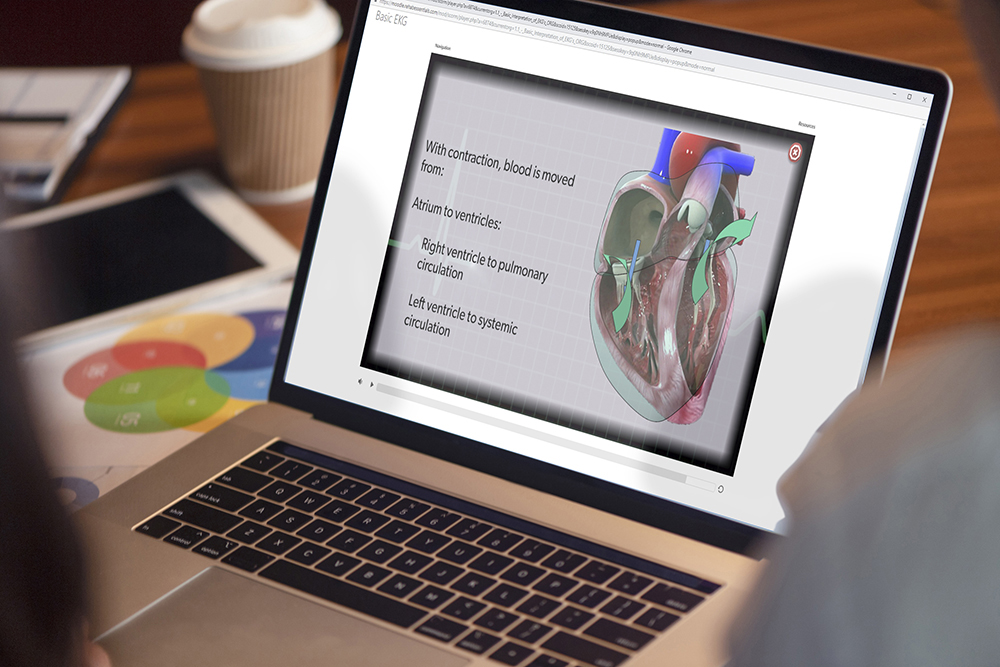Management of Patients with Cardiovascular and Pulmonary Disorders
Steve Tepper, PT, PhD, FAPTA
Eric Stewart PT, DPT
Ellen Wruble Hakim PT, DScPT, MS, CWS, FACCWS
Course Description
This course is designed to expose physical therapists and physical therapy students to the examination and treatment of patients or clients with primary or secondary cardiovascular and/or pulmonary disorders. Learners will receive instruction on best practices to integrate and apply existing evidence into comprehensive patient-client management programs. This course is designed to challenge students to differentiate and prioritize clinical findings based upon level of acuity, patient preference, and knowledge of anatomy, pathophysiology, pharmacology, and diagnostic imaging. Case scenarios will integrate principles of differential diagnosis and establishment of long term management of cardiovascular and pulmonary conditions.

Objectives
- Portion A Cardiovascular Section – Upon completion of this course, the learner will:
- Demonstrate the ability to design and implement a simulated prevention and wellness program, including screening and health promotion for individuals who are at risk for development of cardiovascular disorders.
- Demonstrate the ability to recognize signs/symptoms of contraindication and termination points for activity or exercise.
- Perform an ankle/brachial index and utilize the Clinical Decision Rule developed by Well’s and colleagues.
- Explain and perform* and utilize the enclosed spreadsheet for some common Endurance Tests:
- Differentiate the probable cause of the endurance impairment.
- Explain the importance of physiological monitoring (HR, BP, RR, pulse Ox) of patients while at rest and during exercise.
- Determine the amount of ST-depression/elevation and know its significance.
- Explain how dysrhythmias affect palpation of pulse, heart sounds and blood pressure.
- Be able to draw or recognize and give the functional significance these basic dysrhythmias. Explain which ones are more hazardous (lead to cardiac compromise) and what to do as the PT should these occur.
- bradycardia
- tachycardia (PAT, SV-Tach, V-Tach)
- atrial and ventricular flutter
- atrial and ventricular fibrillation
- 1st, 2nd, and 3rd degree AV conduction blocks
- pre-atrial contraction – PAC
- pre-nodal (junctional) contraction – PNC
- pre-ventricular contraction- PVC
- bigeminy, trigeminy, quadrigeminy
- escape beats- atrial, nodal and ventricular
- 10 M walk velocity test*
- 2-minute step test
- 6 Minute Walk Test*
- 1 Mile Walk or Jog Test*
10. Explain the four (4) phases of cardiac rehabilitation. Give the approximate time sequence and general emphasis of each phase of the rehabilitation.
11. Review and perform* methods to examine endurance and other relevant impairments including peripheral vascular disease (PVD, ABI*), rate pressure product (HR x SBP), PFT’s, and BMI*.
12. Utilize spreadsheets for prediction of VO2, BMI, & reference distance for 6 MWT, 1 mile walk test, I mile jog test.
Portion B Pulmonary Section – Upon completion of this course, the learner will:
1. Discern anatomical findings indicative of an underlying pathological process.
2. Accurately examine the pulmonary system through a methodical process of initial and confirmatory assessments.
3. Recognize the impact of pathology and position on respiratory physiology and breathing mechanics.
4. Select appropriate respiratory interventions based upon clinical findings, diagnostic reports, medications, and medical history.
5. Anticipate extent of pulmonary impairment based upon mode of delivery of supplemental oxygen.
6. Accurately integrate pulmonary interventions into the global assessment of functional performance for patient’s and client’s with varying levels of respiratory compromise.





